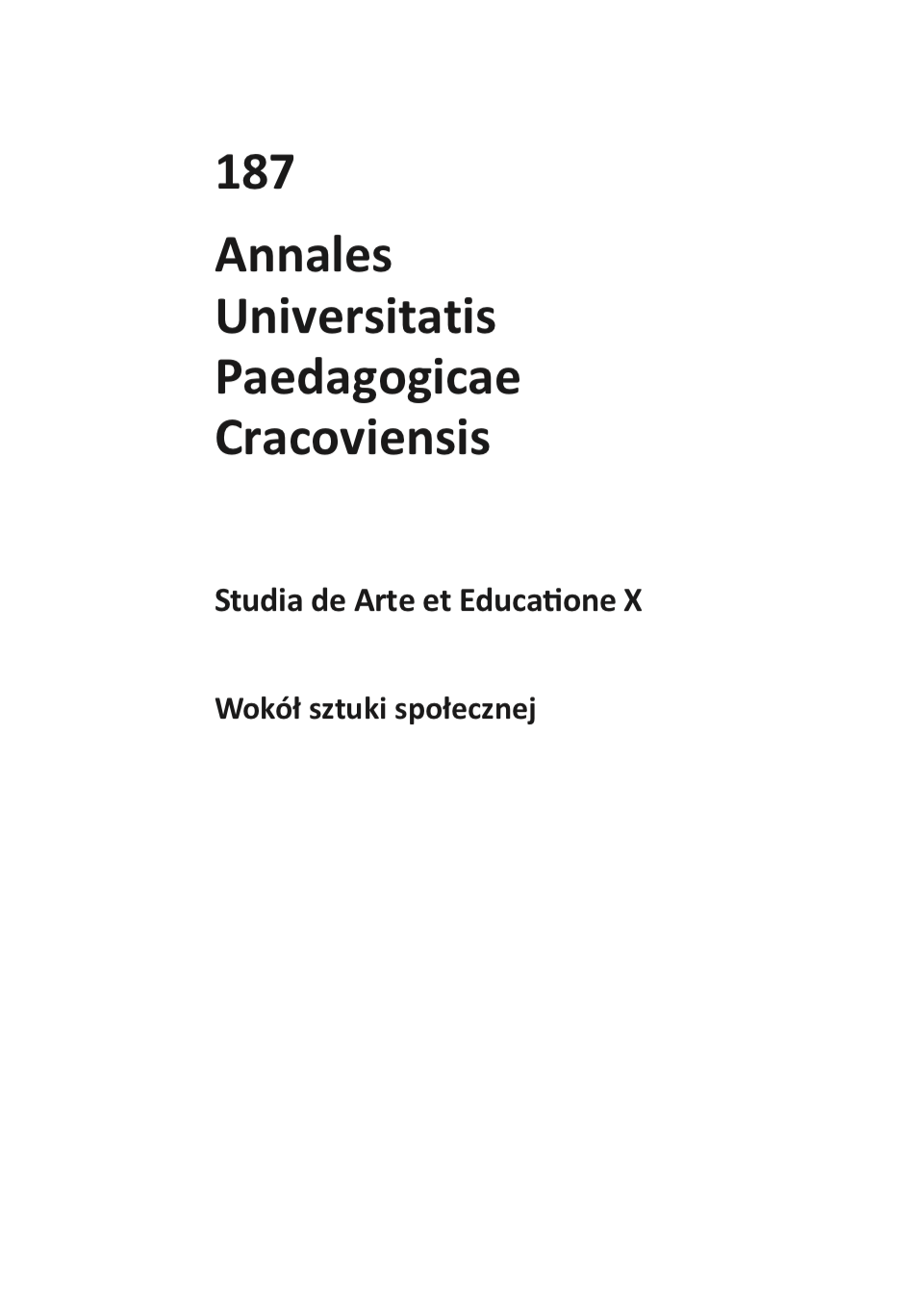Formowanie życia. Katarzyna Kobro i jej koncepcja przestrzeni
Forming of Life. Katarzyna Kobro and Her Concept of Space
Author(s): Małgorzata JędrzejczykSubject(s): Sociology of Art
Published by: Wydawnictwo Uniwersytetu Komisji Edukacji Narodowej w Krakowie
Keywords: Katarzyna Kobro; space; sculpture; architecture; body; constructivism; construction; composition; Frederick Kiesler; art and social change
Summary/Abstract: Polish sculptor Katarzyna Kobro is often considered one of the most important representativesof Polish constructivism while her connections with the Russian group of constructivistartists is also emphasized. On closer examination, however, it is clear that her innovativeconcepts and radical statements went far beyond the field of interests commonly associatedwith constructivist artistic endeavours. This paper explores the constitutive problem forKobro’s sculptures, that is, the integration of self-referential language of art and the space ofevery-day experience.The point of departure of this analysis is the assumption that the notion of space was a crucialpart of this process of integration for Kobro, strongly linked to formal structure of the artobject. According to her rare statements, sculpture was intended to interact with the infinityof space and also be an equal part of it. At the same time– artist considered space an integralpart of an artwork and strongly connected with the spectator’s perceptual activity. With thisstep “in space” Kobro intended to create with the use of forms both the interior and exteriorwith the latter also understood as the space of the beholder’s experience.Like Kiesler’s Raumstadt – another work that the present hypothesis reflects – Kobro’s workscan be considered a distillation which attempts to enclose in the formal structures of a workof art, the rudimentary concepts and universal assumptions about human activity in theworld. In both cases (Kiesler and Kobro), formal structure should operate as a transmitterwhich offers model solutions that can be later translated into forms of particular large-scaleor utilitarian projects. Kobro’s goal was therefore, through the composition of her sculpture(not directly however), to influence one’s perception of the world and ability to think in amore structured but at the same time abstract way. Noteworthy here is her latest knownSpace Composition (9) from 1933 which reveals an intriguing shift in forms from her earlierwork, making them more fluid, smooth and even “biological”.Katarzyna Kobro was already exploring concepts that have become relevant issues in the 2ndhalf of the 20th century. Artistic considerations about space, about the role of beholder inunfolding and “producing” spatial experience, and artistic commitment in the transformationof life-conditions are only some of the concepts fundamental for art in the 1960s or 70s,having already appeared in the 20s in Kobro’s work.
Journal: Studia de Arte et Educatione
- Issue Year: 10/2015
- Issue No: 187
- Page Range: 107-118
- Page Count: 12
- Language: Polish

